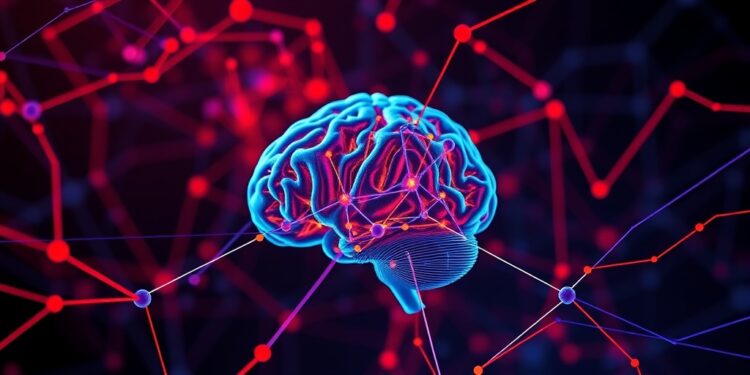In a groundbreaking study published in Nature Communications, researchers have unveiled a new perspective on generalized epilepsy, traditionally regarded as a condition affecting the entire brain. The prevailing view has been that these seizures stem from a widespread disruption throughout the brain. However, recent evidence suggests that a more nuanced understanding may be necessary. The study, led by Frederic L.W.V.J. Schaper, MD, PhD, from Brigham and Women’s Hospital, proposes that generalized epilepsy is, in fact, a brain network disorder where specific areas of the brain play pivotal roles in the onset and propagation of seizures.
Epilepsy affects millions globally, and generalized epilepsy, encompassing a variety of seizure types, poses significant challenges to management, especially in cases resistant to standard treatments. Current treatments often employ antiseizure medications, but for many patients, these are inadequate. As a result, the search for alternative and more effective therapies has intensified. In this study, researchers leveraged advanced neuroimaging techniques and deep brain stimulation (DBS) data to explore the intricate neural networks involved in generalized epilepsy.
The research team set out to unravel a paradox. On one hand, clinical teachings instruct that brain MRIs of patients with idiopathic generalized epilepsy appear normal. Conversely, emerging large-scale imaging studies have identified subtle cortical abnormalities—areas known as cortical atrophy—often dismissed as insignificant. This raises critical questions: Could these seemingly benign regions provide insights into the mechanisms underlying generalized seizures? The researchers theorized that these cortical atrophies might reflect a network that, when disrupted, could lead to seizure activity.
To probe this theory, the researchers accessed a wealth of published studies on cortical atrophy in idiopathic generalized epilepsy and began to harmonize the data. Initially, the locations of these abnormalities appeared random; however, as they analyzed the data more deeply, a striking pattern emerged. They employed the concept of a brain connectome—a comprehensive mapping of neural connections—to determine whether these areas of atrophy correlate with a particular network known to be implicated in seizure activity.
Through meticulous data analysis, the researchers discovered that these cortical atrophy locations converge on a specific brain network associated with generalized seizures. Remarkably, the central apex of this network aligns precisely with the area where neurosurgeons often implant DBS electrodes to treat epilepsy. This region, known as the centromedian thalamus, has garnered attention for its role in modulating seizure pathways. The implication of this finding is profound; it not only sheds light on why DBS can be effective but also opens avenues for optimizing treatment protocols.
Deep brain stimulation has emerged as a powerful tool for treating epilepsy; however, its effectiveness is variable. Understanding the underlying network dynamics could enhance the precision of DBS, leading to improved outcomes for patients. Furthermore, this research hints at the potential of developing new non-invasive brain stimulation techniques that target the identified network, providing further options for patients who struggle with medication-resistant epilepsy.
Looking forward, the research team emphasizes the urgency of translating these findings into clinical practice. They envision utilizing the generalized epilepsy network as a framework to guide the development of innovative brain stimulation therapies. Before such therapies can become mainstream, clinical trials must assess not only their safety but also their efficacy. This process will involve rigorous testing to ensure that patients benefit from these refined approaches.
In parallel with clinical validation, the team aims to delve deeper into the nuances of the generalized epilepsy network. Understanding whether this network is consistent across different types of generalized seizures is a vital next step. It remains to be seen how best to modulate this network for therapeutic gain and whether such interventions can be safely implemented across diverse patient populations. Each of these questions presents a unique challenge, but they represent opportunities for collaboration within the scientific community.
The researchers express a keen interest in partnering with other experts to push the boundaries of our understanding of epilepsy. They are committed to uncovering the intricacies of how these brain circuits can be identified and potentially modulated. Ultimately, the goal remains clear: to enhance therapeutic options for individuals affected by epilepsy and improve their quality of life through innovative and targeted interventions.
As research advances, the broader implications of these findings begin to resonate. They underscore the importance of integrating traditional clinical knowledge with contemporary neuroimaging insights. This study not only challenges existing paradigms in epilepsy research but also inspires a re-evaluation of how we conceptualize and treat seizure disorders. By focusing on the brain as a network, rather than just disparate areas, a new horizon of understanding and treatment may lie ahead.
In summary, the work led by Frederic Schaper and his team is a significant leap toward demystifying generalized epilepsy. By meticulously mapping cortical atrophy and employing next-generation neuroimaging techniques, they provide a compelling narrative that calls for a shift in how epilepsy is conceptualized and treated. This research paves the way for improved patient outcomes through a deeper understanding of the brain’s electrical circuits and how they can be harnessed to alleviate the burden of seizure disorders.
Subject of Research: People
Article Title: A generalized epilepsy network derived from brain abnormalities and deep brain stimulation
News Publication Date: 24-Mar-2025
Web References: Nature Communications Article
References: Ji, G et al. “A generalized epilepsy network derived from brain abnormalities and deep brain stimulation” Nature Communications DOI: 10.1038/s41467-025-57392-7
Image Credits: [Not Provided]
Keywords: Neuroscience, Epilepsy, Brain Stimulation, Generalized Epilepsy, Deep Brain Stimulation, Brain Connectome, Cortical Atrophy, Seizure, Clinical Trials, Brain Circuitry.




